Republic of Pirates
Re: Republic of Pirates
But what if you don't like both change and pirates?
I'm only here for Game Development and Forum Moderation.
If you see a forum rule violation, report the post.
If you see a forum rule violation, report the post.
-
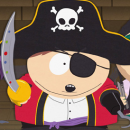
DezNutz - Players Dev Team Coordinator
- Posts: 7090
- Joined: Sat Oct 24, 2015 4:51 pm
- Location: United States of America
Re: Republic of Pirates
DezNutz wrote:But what if you don't like both change and pirates?
Farmville might be more your style..

I don't fear death. I look forward to it with great anticipation. For then I will met God face to face and let him know that I stole his Man of War!!!
-

Shadowood - Fantasy Draft Deity
- Posts: 4080
- Joined: Mon Feb 08, 2016 5:40 am
Re: Republic of Pirates
DezNutz wrote:But what if you don't like both change and pirates?
Unless Shadowood states this, I can't acknowledge it as a valid point


-
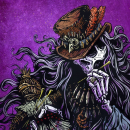
William one eye - Posts: 1621
- Joined: Wed Apr 20, 2016 2:33 pm
Re: Republic of Pirates
Shadowood wrote:DezNutz wrote:But what if you don't like both change and pirates?
Farmville might be more your style..
Send me your farm ID, I am currently level 100000 on farmville and love it. I only play like once a week though.

-
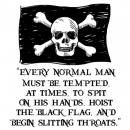
TheLoveTiger - Posts: 381
- Joined: Mon Apr 21, 2014 6:18 pm
Re: Republic of Pirates
A group of pirates who control a piece of territory and organise to do so are no longer pirates : they are a de facto nation. The point of pirates was that they were outlaw (outside of laws) : not of any nation, not bound by conventions, customs or rules : beholden to none but themselves and thus free to act as they felt fit.
This proposal smacks more and more of wanting to have a cake and eat it too : that a group of pirates could act to deny use of a territory to those about their lawful occasion (i.e blockade, or attacks to loot and plunder it) is sound enough : but when they act as a nation, with laws and rules and taxes and systems of governance and control : they aint pirates anymore.
This proposal smacks more and more of wanting to have a cake and eat it too : that a group of pirates could act to deny use of a territory to those about their lawful occasion (i.e blockade, or attacks to loot and plunder it) is sound enough : but when they act as a nation, with laws and rules and taxes and systems of governance and control : they aint pirates anymore.
-1 : Move to archive.
-
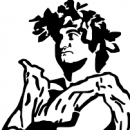
Most Lee Harmless - Posts: 3988
- Joined: Sat Mar 01, 2014 3:48 pm
Re: Republic of Pirates
Danik wrote:A group of pirates who control a piece of territory and organise to do so are no longer pirates : they are a de facto nation. The point of pirates was that they were outlaw (outside of laws) : not of any nation, not bound by conventions, customs or rules : beholden to none but themselves and thus free to act as they felt fit.
This proposal smacks more and more of wanting to have a cake and eat it too : that a group of pirates could act to deny use of a territory to those about their lawful occasion (i.e blockade, or attacks to loot and plunder it) is sound enough : but when they act as a nation, with laws and rules and taxes and systems of governance and control : they aint pirates anymore.
I think I tend to agree with Danik here. I think other features could be added that would cater more to the style of pirates. Like a feature that allowed an actual blockade that would require negotiating with the pirates to re-open the port. This can happen today but only ragtag. I would love to see a mechanics feature that allows a blockade. I think there definitely could stand to be some changes made to "empower" pirates functionality in this game but organizing them with a governing body seems a miss.
-

Banger - Posts: 1166
- Joined: Thu Feb 16, 2017 3:00 pm
Re: Republic of Pirates
Republic of Pirates in Nassau - From Wikipedia
while this reference is loose and sights no references of its own.
It seems to be a summation of history and legend from multiple other sources.
the following - is directly copied from
https://en.wikipedia.org/wiki/Republic_of_Pirates
Republic of Pirates
From Wikipedia, the free encyclopedia
The era of piracy in the Bahamas began in 1696, when the privateer Henry Every brought his ship the Fancy loaded with loot from plundering Indian trade ships into Nassau harbour. Every bribed the governor Nicholas Trott with gold and silver, and with the Fancy itself, still loaded with 50 tons of elephant tusks and 100 barrels of gunpowder. This established Nassau as a base where pirates could operate safely, although various governors regularly made a show of suppressing piracy. Although the governors were still legally in charge, the pirates became increasingly powerful.
The era of true pirate control occurred when a combined Franco-Spanish Fleet attacked Nassau in 1703 and again in 1706; the island was effectively abandoned by many of its settlers and left without any English government presence. Nassau was then taken over by English privateers, who became completely lawless pirates over time. The pirates attacked French and Spanish ships, while the French and Spanish forces burned Nassau several more times. Pirates established themselves in Nassau, and essentially established their own republic with its own governors. By 1713 the War of the Spanish Succession was over, but many British privateers were slow to get the news, or reluctant to accept it, and so slipped into piracy. This led to large numbers of unemployed privateers making their way to New Providence to join the republic and swell its numbers. The republic was dominated by two famous pirates who were bitter rivals – Benjamin Hornigold and Henry Jennings. Hornigold was mentor to pirates such as the famous Edward Teach, known as "Blackbeard", along with Sam Bellamy and Stede Bonnet. Jennings was mentor to Charles Vane, 'Calico' Jack Rackham, Anne Bonny, and Mary Read. Despite their rivalries, the pirates formed themselves into the 'Flying Gang' and quickly became infamous for their exploits. The Governor of Bermuda stated that there were over 1000 pirates in Nassau at that time and that they outnumbered the mere hundred of inhabitants in the town. Blackbeard was later voted by the pirates of Nassau to be their Magistrate, to be in command of their republic and enforce law and order as he saw fit.
While originally the pirates had avoided attacking British ships, this restraint disappeared over time, and at their height, the pirates could command a small fleet of ships that could take on the frigates of the Royal Navy. The amount of havoc the pirates were causing led to an outcry for their destruction, and finally George I appointed Woodes Rogers as Governor of the Bahamas to bring the piracy to an end.[1] In 1718 Rogers arrived in Nassau with a fleet of seven ships, carrying a pardon for all those who turned themselves in and refrained from further piracy. Among those who accepted this offer was Benjamin Hornigold, and, in a shrewd move, Rogers commissioned Hornigold to hunt down and capture those pirates who refused to surrender and accept the royal pardon. As a former privateer himself, Hornigold was well placed to understand what needed to be done and he pursued his former comrades with zeal. Although pirates such as Charles Vane and Blackbeard evaded capture, Hornigold did take ten pirates prisoner and on the morning of 12 December 1718, nine of them were executed. This act re-established British control and ended the pirates' republic in the Bahamas. Those pirates who had fled successfully continued their piratical activities elsewhere in the Caribbean in what has become known as the Golden Age of Piracy.
Code of conduct
Main article: Pirate code
The pirates ran their affairs using what was called the pirate code, which was the basis of their claim that their rule of New Providence constituted a kind of 'republic'. According to the code, the pirates ran their ships democratically, sharing plunder equally and selecting and deposing their captains by popular vote. Many of the pirates were privateers out of work since the end of the Queen Anne's War and ex-sailors who had revolted against the tyrannical conditions on merchant and naval ships, and Africans with many Irishmen could be equal members of the crew – several mulattos became pirate captains. Some of the pirates were also Jacobites, who had become pirates to help restore the recently deposed Stuart line to the throne.
while this reference is loose and sights no references of its own.
It seems to be a summation of history and legend from multiple other sources.
the following - is directly copied from
https://en.wikipedia.org/wiki/Republic_of_Pirates
Republic of Pirates
From Wikipedia, the free encyclopedia
The era of piracy in the Bahamas began in 1696, when the privateer Henry Every brought his ship the Fancy loaded with loot from plundering Indian trade ships into Nassau harbour. Every bribed the governor Nicholas Trott with gold and silver, and with the Fancy itself, still loaded with 50 tons of elephant tusks and 100 barrels of gunpowder. This established Nassau as a base where pirates could operate safely, although various governors regularly made a show of suppressing piracy. Although the governors were still legally in charge, the pirates became increasingly powerful.
The era of true pirate control occurred when a combined Franco-Spanish Fleet attacked Nassau in 1703 and again in 1706; the island was effectively abandoned by many of its settlers and left without any English government presence. Nassau was then taken over by English privateers, who became completely lawless pirates over time. The pirates attacked French and Spanish ships, while the French and Spanish forces burned Nassau several more times. Pirates established themselves in Nassau, and essentially established their own republic with its own governors. By 1713 the War of the Spanish Succession was over, but many British privateers were slow to get the news, or reluctant to accept it, and so slipped into piracy. This led to large numbers of unemployed privateers making their way to New Providence to join the republic and swell its numbers. The republic was dominated by two famous pirates who were bitter rivals – Benjamin Hornigold and Henry Jennings. Hornigold was mentor to pirates such as the famous Edward Teach, known as "Blackbeard", along with Sam Bellamy and Stede Bonnet. Jennings was mentor to Charles Vane, 'Calico' Jack Rackham, Anne Bonny, and Mary Read. Despite their rivalries, the pirates formed themselves into the 'Flying Gang' and quickly became infamous for their exploits. The Governor of Bermuda stated that there were over 1000 pirates in Nassau at that time and that they outnumbered the mere hundred of inhabitants in the town. Blackbeard was later voted by the pirates of Nassau to be their Magistrate, to be in command of their republic and enforce law and order as he saw fit.
While originally the pirates had avoided attacking British ships, this restraint disappeared over time, and at their height, the pirates could command a small fleet of ships that could take on the frigates of the Royal Navy. The amount of havoc the pirates were causing led to an outcry for their destruction, and finally George I appointed Woodes Rogers as Governor of the Bahamas to bring the piracy to an end.[1] In 1718 Rogers arrived in Nassau with a fleet of seven ships, carrying a pardon for all those who turned themselves in and refrained from further piracy. Among those who accepted this offer was Benjamin Hornigold, and, in a shrewd move, Rogers commissioned Hornigold to hunt down and capture those pirates who refused to surrender and accept the royal pardon. As a former privateer himself, Hornigold was well placed to understand what needed to be done and he pursued his former comrades with zeal. Although pirates such as Charles Vane and Blackbeard evaded capture, Hornigold did take ten pirates prisoner and on the morning of 12 December 1718, nine of them were executed. This act re-established British control and ended the pirates' republic in the Bahamas. Those pirates who had fled successfully continued their piratical activities elsewhere in the Caribbean in what has become known as the Golden Age of Piracy.
Code of conduct
Main article: Pirate code
The pirates ran their affairs using what was called the pirate code, which was the basis of their claim that their rule of New Providence constituted a kind of 'republic'. According to the code, the pirates ran their ships democratically, sharing plunder equally and selecting and deposing their captains by popular vote. Many of the pirates were privateers out of work since the end of the Queen Anne's War and ex-sailors who had revolted against the tyrannical conditions on merchant and naval ships, and Africans with many Irishmen could be equal members of the crew – several mulattos became pirate captains. Some of the pirates were also Jacobites, who had become pirates to help restore the recently deposed Stuart line to the throne.

-

William one eye - Posts: 1621
- Joined: Wed Apr 20, 2016 2:33 pm
Re: Republic of Pirates
I think the ranks should be different. Citizen should be called buccaneer. Captain should be Pirate or buccaneer captain. Major should be gentleman of fortune. Colonel should be commodore. Admiral should be buccaneer admiral. Baron
Should be Seasoned admiral. Count should be notorious admiral. Duke should be pirate lord. King should be pirate king or something of the like.
Should be Seasoned admiral. Count should be notorious admiral. Duke should be pirate lord. King should be pirate king or something of the like.
-
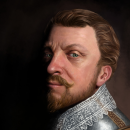
Jack Teach - Posts: 3962
- Joined: Fri Oct 20, 2017 7:18 pm
Re: Republic of Pirates
Great idea though, I personally think this would be a perfect edition to the game as when I look at pirate profiles it so boring seeing the word 'pirates' and nothing else
-

Jack Teach - Posts: 3962
- Joined: Fri Oct 20, 2017 7:18 pm
Re: Republic of Pirates
If we don't do this, we should at least give pirates titles.
-

Jack Teach - Posts: 3962
- Joined: Fri Oct 20, 2017 7:18 pm
Powered by phpBB © 2000, 2002, 2005, 2007 phpBB Group
Design by PiratesGlory.com
Design by PiratesGlory.com
